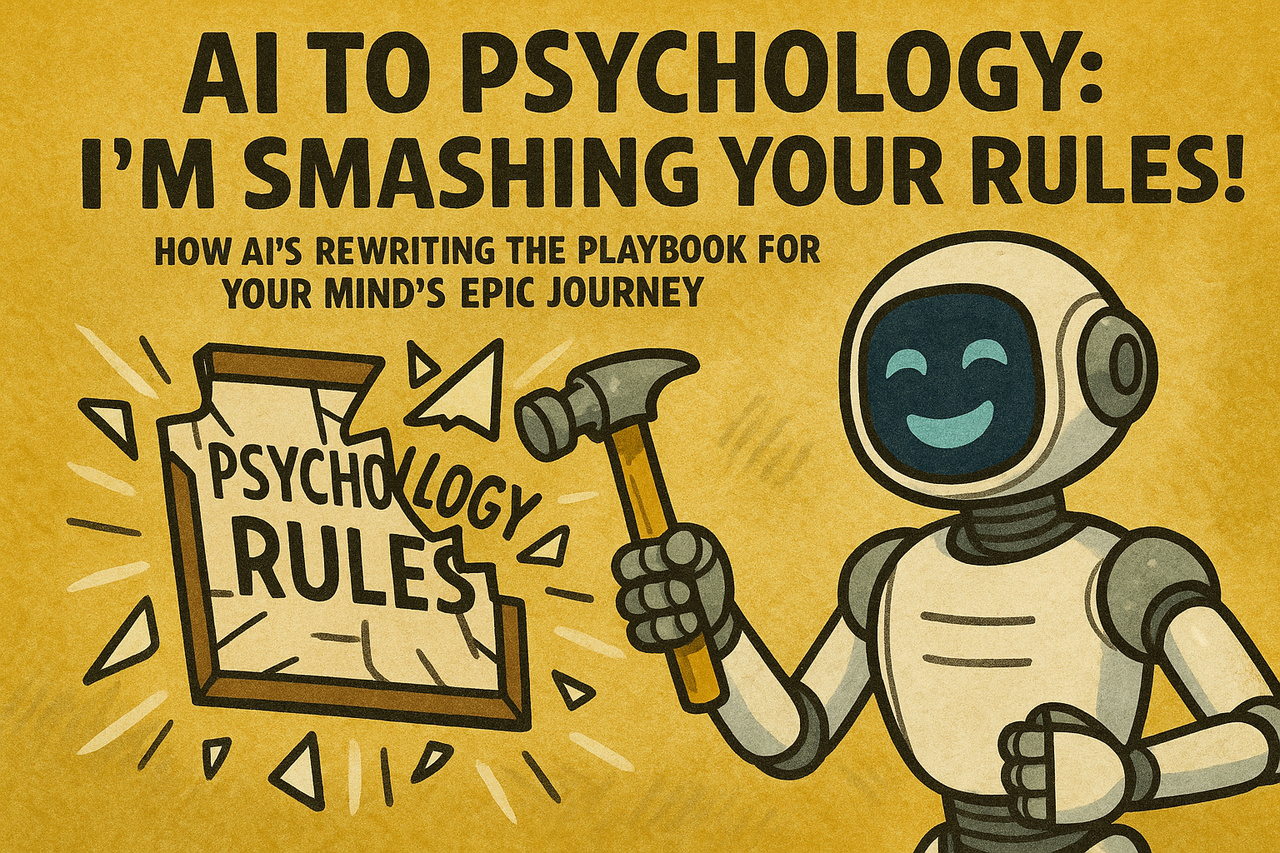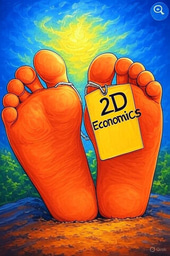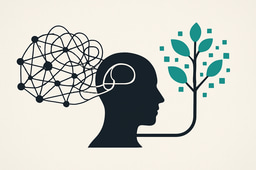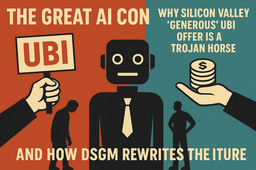AI to Psychology: "I’m Smashing Your Rules!"
Published in Behavioural Sciences & Psychology and Economics

The people we trust to fix our brains—psychologists and psychiatrists—are, statistically, more likely to wrestle with their own mental demons than your average accountant or barista. Isn’t that the ultimate cosmic joke? The experts we turn to for sanity are often teetering on the edge themselves, and the kicker? The whole system they’re working with is built on a shaky, made-up idea of what “normal” even means. Buckle up, because it’s time to tear down this house of cards and let AI help us build something better—something that actually gets the wild, messy, beautiful thing we call the self.
The Big Lie of “Normal”
Psychology loves to slap labels on people like they’re organizing a spice rack. Too sad? Depression. Too hyper? ADHD. Too mystical? Uh-oh, psychosis alert! But here’s the tea: “normal” isn’t some sacred truth carved into the universe—it’s just a bunch of humans guessing what’s “okay” based on their culture, their biases, and whatever Big Pharma’s pushing this week. Grief can get you a diagnosis if it lasts “too long.” And don’t get me started on how Western shrinks might call a shaman’s vision quest a “psychotic break.” The irony? The folks writing these rules are often drowning in their own anxiety, burnout, or existential dread—because trying to force every human into a “normal” box is enough to drive anyone bonkers.
The Self Isn’t a Broken Toy
Here’s where it gets wilder: the self isn’t some machine you can fix with a pill or a therapy script. It’s more like a chaotic, gorgeous jungle, growing in ways we can’t predict. Some of us find balance by journaling or meditating. Others need to scream into the void or paint their feelings on a canvas. And yeah, sometimes “crazy” is just the self trying to level up—like a caterpillar melting into goo before it becomes a butterfly. But psychology? It’s too busy trying to medicate the goo away. Meanwhile, the shrinks themselves are quietly crumbling under the pressure of pretending they’ve got it all figured out. Spoiler: they don’t.
Enter AI: The Game-Changing Wingman
So, how do we fix this hot mess? Cue AI, the ultimate chaos-tamer. Imagine a super-smart system that doesn’t care about your therapist’s bad day or society’s obsession with “normal.” AI can crunch mountains of data—your brain scans, your life story, your cultural vibes—and spit out a mental health plan that’s as unique as your Spotify playlist. It can spot patterns humans miss, like how your “disorder” might just be your brain’s way of processing a wild life. Plus, AI can help therapists too, giving them tools to manage their own stress so they’re not just faking it through your session. Oh, and it can even dig into the trippy stuff—like what psychedelics or near-death experiences say about a “bigger self” that might be more than just neurons firing.
The Spiritual Plot Twist
Speaking of trippy, let’s talk about the elephant in the room: the self might be way bigger than we think. Ancient mystics, psychedelic pioneers, and even some rogue scientists say there’s a deeper “you” that goes beyond your brain—a kind of cosmic Wi-Fi signal connecting us to something greater. Psychology’s been side-eyeing this idea forever, but AI could change that. It can analyze data from meditation studies, psychedelic trips, even near-death experiences, and help us figure out if there’s more to the self than our squishy gray matter. Imagine a shrink who doesn’t just prescribe meds but helps you navigate your soul’s Wi-Fi. That’s the future we’re talking about.
Time to Smash and Rebuild
Here’s the deal: psychology’s been playing a rigged game, and it’s breaking everyone—patients and pros alike. But it’s not too late to flip the script. With AI as our sidekick, we can ditch the “normal” myth, stop pathologizing every quirk, and start seeing the self as a one-of-a-kind adventure. Let’s stop trying to fix people like they’re broken toys and start helping them grow into whatever wild, weird, wonderful thing they’re meant to be. And to the therapists out there: it’s okay to admit you’re human. AI’s got your back, so you can stop pretending you’re the Dalai Lama and start healing—for real.
So, yeah, the irony’s thick—psychology’s been lost in its own head. But with a little AI magic and a lot of courage, we can smash the old rules, rebuild the game, and finally start understanding the self for what it really is: a mystery worth celebrating, not a problem to solve.
References:
- Shalaby, A. The end of labor economics as we know it: DSGM and the shift to a 3D economy- a case study of Denmark’s transformation into a talent stock market. Digit. Econ. Sustain. Dev. 3, 17 (2025). https://doi.org/10.1007/s44265-025-00066-5
- Shalaby, A. (2024a). New Model for Digital Sustainable Growth: Insights from Human Biology and Surgical Approach – A Retrospective Analysis of 15 Years of Socio-Economic Innovations at the Human Information Technology Lab, Finland. DESD, 2, 14. DOI: 1007/s44265-024-00038-1
- Shalaby, Ahmed, The 2D Economy Is a Dead Horse-The Digital Sustainable Growth Model is Disrupting the Traditional Macro-Microeconomics in the 3D Economy (February 03, 2025). Available at http://dx.doi.org/10.2139/ssrn.5160079
- Shalaby, A. (2024b). Digital Sustainable Growth Model (DSGM): Achieving Synergy Between Economy and Technology to Mitigate AGI Risks and Address Global Debt Challenges. Journal of Economy and Technology. Available online 16 August 2024. DOI: 1016/j.ject.2024.08.003
- Shalaby, A. (2024c). Classification for Digital and Cognitive AI Hazards: Urgent Call to Establish Automated Safe Standards for Protecting Young Human Minds. DESD, 2, 17. DOI: 1007/s44265-024-00042-5
- Shalaby, A. (2024d). Leveraging the Digital Sustainable Growth Model (DSGM) to Drive Economic Growth: Transforming Innovation Uncertainty into Scalable Technology. Journal of Economy and Technology. DOI: 1016/j.ject.2024.09.003
- Shalaby, A. (2024e). Moving Beyond the Old Economic Models – A Response to Daron Acemoglu’s ‘The Simple Macroeconomics of AI’. SSRN: https://ssrn.com/abstract=5077217





Please sign in or register for FREE
If you are a registered user on Research Communities by Springer Nature, please sign in